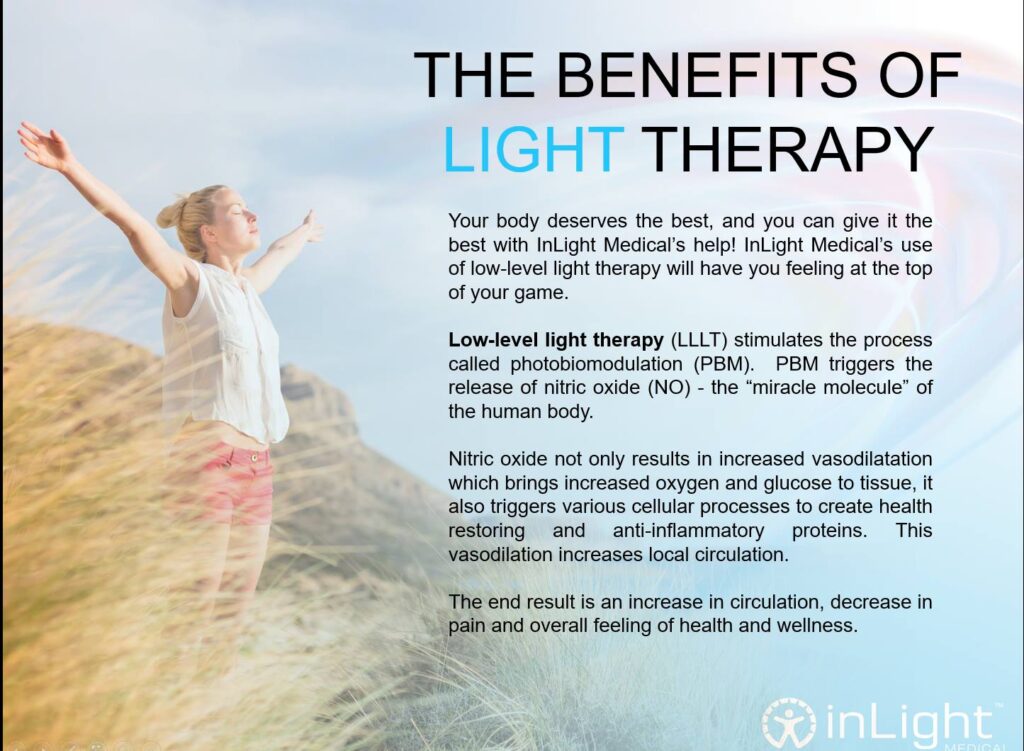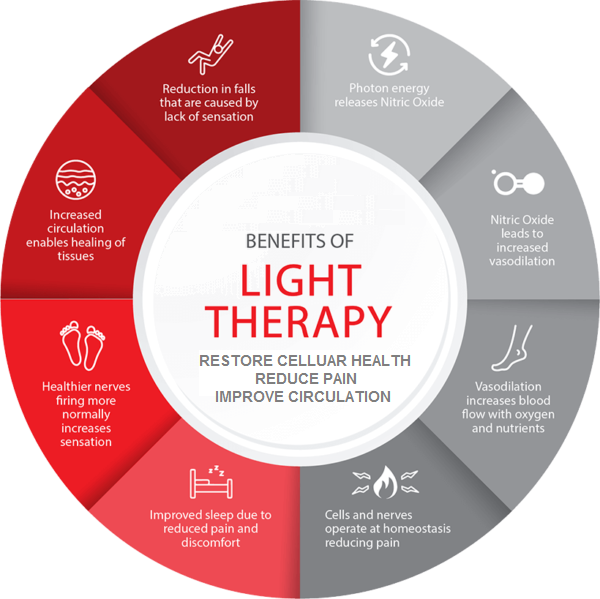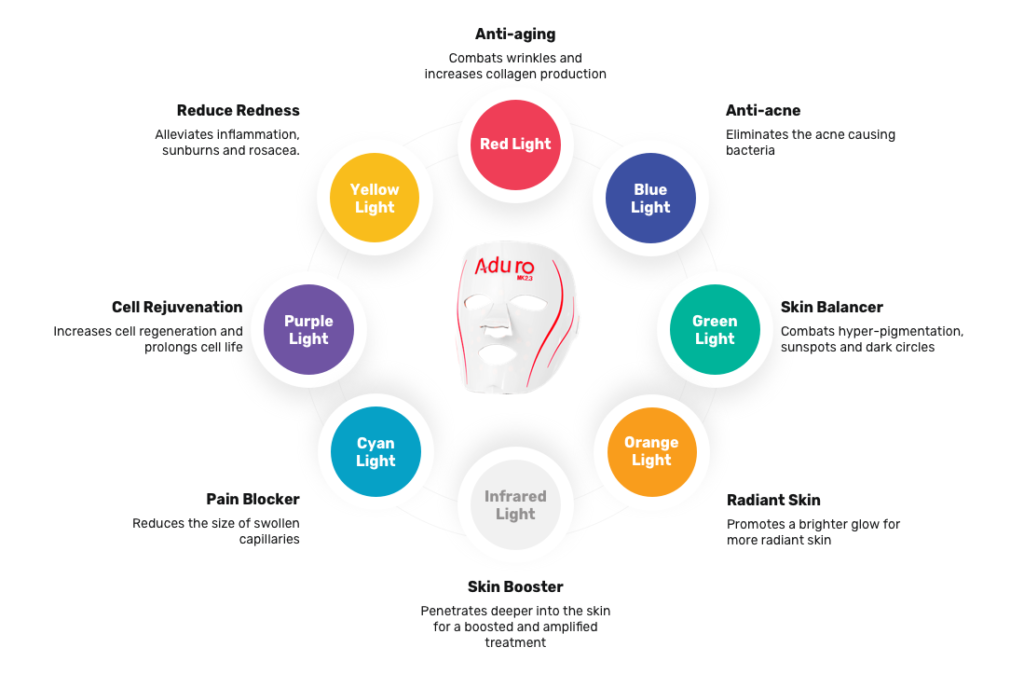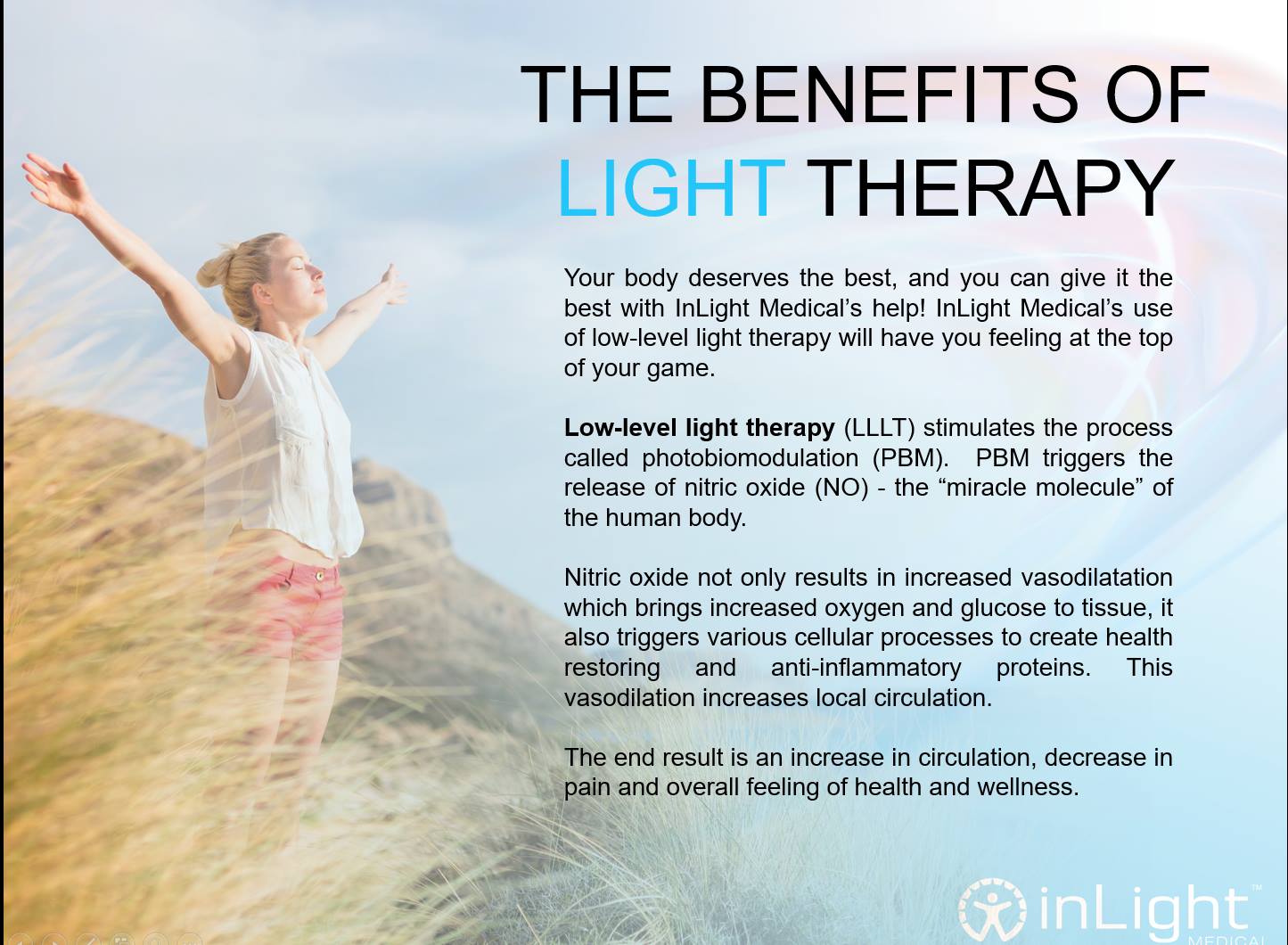In this article, you will learn about the fascinating benefits of light therapy. Find out how exposing yourself to certain types of light can improve your mood, energy levels, and sleep patterns. Discover the various ways light therapy is used as a treatment for seasonal affective disorder (SAD), acne, and even jet lag. By the end, you’ll understand just how powerful light can be in improving your overall well-being.
What is Light Therapy
Definition of Light Therapy
Light therapy, also known as phototherapy or heliotherapy, is a non-invasive treatment that uses artificial light to improve physical and mental health. It involves exposure to specific wavelengths of light that mimic natural sunlight. This therapeutic approach has gained popularity in recent years for its numerous benefits and minimal side effects.
History of Light Therapy
The concept of utilizing light for healing dates back to ancient civilizations. The ancient Greeks, for instance, believed in the healing powers of sunlight and often sought sun exposure for various health conditions. In the early 20th century, light therapy gained recognition as a method to treat tuberculosis and other infectious diseases. Since then, research has expanded to explore its effectiveness in treating various medical and mental health conditions.
How Does Light Therapy Work
Explanation of Light’s Effect on the Body
Exposure to light triggers various biological processes in the body. Light therapy primarily works by influencing the production of important hormones, such as serotonin and melatonin, which play a crucial role in regulating mood, sleep patterns, and overall well-being. It also affects the body’s internal clock, known as the circadian rhythm, which helps maintain synchronization with the natural day-night cycle.
Types of Light Used in Therapy
Different types of light are used in therapy, each with its own specific benefits. The most common types include bright light therapy, dawn simulation therapy, blue light therapy, and red light therapy. Bright light therapy involves exposure to a broad-spectrum light that mimics natural sunlight. Dawn simulation therapy gradually increases the intensity of light to simulate a natural sunrise. Blue light therapy uses a specific wavelength to treat seasonal affective disorder, while red light therapy focuses on promoting healing and reducing inflammation.
Mechanisms of Action
The mechanisms behind light therapy’s effectiveness are still being explored, but researchers believe that it involves several processes in the body. Light exposure stimulates the retina, which sends signals to the brain’s hypothalamus. The hypothalamus then releases certain chemicals and hormones that affect mood, sleep, and the body’s internal clock. Additionally, light therapy may also regulate the expression of genes associated with inflammation and immune response, promoting overall wellness.

This image is property of photonictherapyinstitute.com.
Benefits of Light Therapy
Treatment of Seasonal Affective Disorder
One of the most well-known applications of light therapy is in the treatment of seasonal affective disorder (SAD). SAD is a type of depression that occurs during specific seasons, most commonly during winter due to reduced exposure to natural sunlight. Light therapy can alleviate symptoms by increasing serotonin levels, improving mood, and regulating the body’s internal clock.
Improvement of Mood and Depression
Light therapy has been found to be effective in improving overall mood and reducing symptoms of depression. Regular exposure to bright light has been shown to increase serotonin levels, known as the “feel-good” hormone, which can lead to enhanced well-being and a more positive outlook on life. It can be especially beneficial for individuals with mild to moderate depression.
Regulation of Circadian Rhythm
Light therapy can help regulate the body’s internal clock and improve sleep patterns. By exposing oneself to bright light in the morning, the body’s circadian rhythm is reset, leading to better alignment with the natural day-night cycle. This can help individuals fall asleep faster, improve sleep quality, and wake up feeling refreshed and energized.
Relief from Sleep Disorders
Light therapy has also been used as a treatment for various sleep disorders, such as insomnia and jet lag. By adjusting exposure to light, especially during specific times of the day, individuals can regulate their sleep-wake cycle and improve their ability to fall asleep and stay asleep. Light therapy can also be used to reset the internal clock after traveling across time zones, reducing the effects of jet lag.
Enhancement of Skin Health
Certain types of light therapy, such as red light therapy, have shown promising benefits for skin health. Red light therapy stimulates collagen production and increases blood flow, which can improve skin elasticity, reduce wrinkles, and promote overall skin rejuvenation. It can also be used to treat specific skin conditions, such as acne and psoriasis.
Management of Pain and Inflammation
Light therapy has been found to have analgesic (pain-relieving) and anti-inflammatory effects. By targeting specific areas of the body with light of certain wavelengths, it can help alleviate pain associated with conditions such as arthritis, muscle soreness, and fibromyalgia. Additionally, light therapy has been shown to reduce inflammation and promote healing in wounds and injuries.
Different Types of Light Therapy
Bright Light Therapy
Bright light therapy involves exposure to a high-intensity light source, typically a lightbox or light visor. Sessions typically last between 20 to 30 minutes, during which individuals sit or work near the light source. This type of therapy is commonly used to treat SAD, improve mood, and regulate the circadian rhythm.
Dawn Simulation Therapy
Dawn simulation therapy involves the use of a light alarm clock or a special lamp that gradually increases the intensity of light over a specified period of time, simulating a natural sunrise. This therapy is beneficial for individuals who have difficulty waking up in the morning or experience disrupted sleep patterns.
Blue Light Therapy
Blue light therapy uses a specific wavelength of light to treat specific conditions, such as SAD and sleep disorders. It works by suppressing the production of melatonin, a hormone responsible for regulating sleep. Blue light therapy is often used in the form of a lightbox or a portable device that emits the specific wavelength of light.
Red Light Therapy
Red light therapy utilizes a certain wavelength of red or near-infrared light to stimulate cellular activity and promote healing. It is commonly used in dermatology for its anti-aging and skin rejuvenation benefits. Red light therapy devices can come in the form of handheld devices, light panels, or specialized lamps.

This image is property of ledtechnologies.com.
Light Therapy Devices
Light Boxes
Light boxes are the most common devices used for light therapy. They are typically rectangular in shape and emit bright light mimicking natural sunlight. They come in various sizes and intensities, allowing individuals to customize their treatment according to their specific needs. Light boxes are often used for SAD, mood improvement, and regulation of circadian rhythm.
Light Visors
Light visors are similar to light boxes but are worn on the head, allowing individuals to move around and engage in various activities while undergoing light therapy. They offer convenience and mobility, making them suitable for individuals with busy lifestyles. Light visors are widely used for the treatment of SAD and circadian rhythm disorders.
Light Alarm Clocks
Light alarm clocks combine the functions of an alarm clock and a light therapy device. They gradually increase the intensity of light to simulate a natural sunrise, helping individuals wake up more naturally and feel more refreshed. Light alarm clocks are often used to regulate sleep patterns and improve mood.
Light Bulbs
Light therapy can also be achieved through specialized light bulbs that emit the necessary wavelengths of light. These bulbs can be used in existing light fixtures, allowing individuals to incorporate light therapy into their daily routines seamlessly. Light bulbs are commonly used for mood improvement, circadian rhythm regulation, and sleep disorders.
Light Therapy Treatment Protocols
Duration and Frequency of Sessions
The duration and frequency of light therapy sessions can vary depending on the individual’s specific needs and the condition being treated. In general, light therapy sessions typically last between 20 to 30 minutes, with individuals being exposed to the light source at a specific distance and angle. The sessions are usually done daily or several times per week, depending on the desired outcome and the severity of the condition.
Recommended Exposure Times
The recommended exposure times for light therapy depend on the type of light used and the purpose of the treatment. For bright light therapy, sessions typically range from 10,000 to 20,000 lux, with the duration varying between 20 to 30 minutes. Blue light therapy sessions typically involve exposure to 2,500 to 10,000 lux for 15 to 30 minutes, while red light therapy sessions usually last between 10 to 20 minutes.
Safety Precautions
Light therapy is generally considered safe and well-tolerated, but certain precautions should be taken to ensure its effectiveness and minimize potential side effects. It is important to follow the manufacturer’s instructions for specific light therapy devices and maintain the recommended distance and angle when undergoing treatment. Protective eyewear may also be recommended to shield the eyes from bright light exposure.
Potential Side Effects
Light therapy is generally well-tolerated, but some individuals may experience mild side effects. These can include headaches, eyestrain, irritability, and insomnia. These side effects are usually temporary and subside as the body adjusts to the treatment. It is important to consult with a healthcare professional before starting light therapy, especially for individuals with certain medical conditions or who are taking medications that may interact with light exposure.

This image is property of images.squarespace-cdn.com.
Research and Studies on Light Therapy
Efficacy and Effectiveness
Numerous studies have investigated the efficacy and effectiveness of light therapy for various conditions. Research has consistently shown positive outcomes in the treatment of SAD, mood disorders, sleep disorders, and skin conditions. The results of these studies suggest that light therapy can be a valuable and clinically effective treatment option for individuals seeking relief from these conditions.
Comparative Studies with Other Treatments
Light therapy has been compared to other treatments, such as antidepressant medication and cognitive-behavioral therapy, for the treatment of mood disorders. Comparative studies have shown that light therapy can be equally effective in treating mild to moderate depression and has the added advantage of minimal side effects compared to medication. It may also be used in combination with other treatments for enhanced therapeutic effects.
Clinical Trials
Ongoing clinical trials continue to explore the potential applications of light therapy in various medical and mental health conditions. These trials aim to further establish the therapeutic benefits of light therapy and refine treatment protocols. By conducting randomized controlled trials, researchers can provide more robust evidence to support the use of light therapy in clinical practice.
Light Therapy in Different Settings
Medical and Clinical Applications
Light therapy is widely used in medical and clinical settings for various conditions. It is commonly employed in dermatology for the treatment of skin conditions such as psoriasis and acne. Additionally, it is utilized in pain management clinics for its analgesic and anti-inflammatory effects. Light therapy is also frequently used in neonatal care units to treat jaundice in newborns.
Psychiatric and Mental Health Facilities
Light therapy is increasingly being incorporated into psychiatric and mental health facilities as a non-invasive treatment option for mood disorders. It is commonly used in the treatment of SAD, depression, bipolar disorder, and sleep disorders. The availability of light therapy in these settings allows individuals to receive specialized care and support under the guidance of mental health professionals.
Spas and Wellness Centers
Light therapy has become a popular feature in spas and wellness centers, offering individuals an opportunity to relax and improve their well-being. Spas often offer red light therapy for its skin rejuvenation benefits, while wellness centers provide bright light therapy to enhance mood and overall wellness. These settings provide a tranquil environment conducive to therapeutic light treatments.
Home-based Light Therapy
Advancements in light therapy devices have made it possible for individuals to undergo light therapy in the comfort of their own homes. Many light therapy devices, such as light boxes, visors, and alarm clocks, are designed for home use, allowing individuals to incorporate light therapy into their daily routines. Home-based light therapy offers flexibility and convenience, particularly for individuals with busy schedules.

This image is property of Amazon.com.
Cost and Availability of Light Therapy
Affordability and Insurance Coverage
The cost of light therapy can vary depending on the type of device and the brand. Light therapy devices range in price from affordable options to more high-end devices with additional features. Some health insurance plans may cover the cost of light therapy for specific medical conditions, such as SAD or sleep disorders. It is advisable to check with your insurance provider for coverage details.
Accessibility in Different Countries
Light therapy is accessible in many countries, with devices available for purchase both online and in physical stores. The availability of light therapy devices may vary depending on the region or country. In some countries, light therapy may also be offered as a treatment option in medical or mental health facilities. It is recommended to explore local resources and consult with healthcare professionals for guidance on accessing light therapy in your region.
Availability of Light Therapy Devices
Light therapy devices are widely available from various manufacturers and retailers. They can be purchased online through websites specializing in medical equipment or directly from manufacturers. Additionally, light therapy devices may also be available in specialty stores, pharmacies, and wellness centers. It is important to ensure that the device meets safety standards and specifications before making a purchase.
Conclusion
In conclusion, light therapy offers a multitude of benefits for both physical and mental health. Its non-invasive nature, minimal side effects, and wide range of applications make it an appealing treatment option for various conditions. Light therapy has been shown to improve mood and reduce symptoms of depression, regulate sleep patterns, enhance skin health, and manage pain and inflammation. With the advancements in light therapy devices and ongoing research, the future of light therapy holds promise for further applications and potential breakthroughs in medical and mental health treatment. So, harness the power of light and discover the transformative effects of light therapy for yourself.

This image is property of assets-global.website-files.com.
